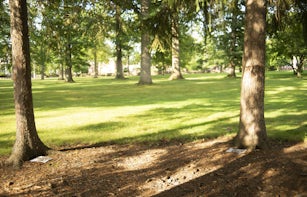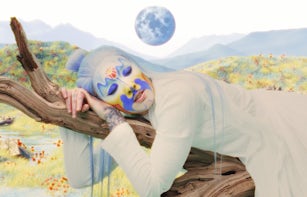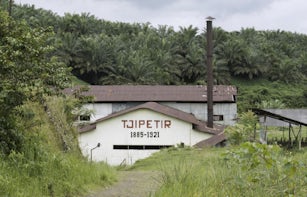On viewing Christopher Kulendran Thomas’ film 60 Million Americans Can’t Be Wrong (2016), one could easily mistake the work for another ironic critical take on the contemporary obsession with the virtual; one in which people’s lives are experienced through smart technologies and social media. 01 However, this film is not a tongue-in-cheek spoof but rather a real-world proposal for a ‘democratised off-shore economic system’ that allows people to become or remain transitory citizens – ‘citizens of the cloud for whom the whole world could be home.’ 02 The film is part of a project by Kulendran Thomas and Annika Kuhlmann titled New Eelam (2016–ongoing), a start-up company billed as a ‘subscription housing’ service. The project ambitiously proposes to cross legal and nation-state boundaries in offering a fluid form of citizenship in which what we call ‘home’ could be anywhere. It plans to reorganise housing to ‘function more like informational goods’.03
A work like New Eelam begs the question, what makes artists suitable figures to propose new or alternative economic models? In recent years a number of artists have engaged in proposing and also effectively employing alternative economies. What is meant here by alternative economies are practices that, by extending artistic strategies into the wider economic sphere, articulate non-standard models of economy as well as of artistry. Operating beyond the institutional space of the gallery, the goods and services produced here go beyond the artistic. Of course, such strategies have themselves been subsumed within dominant models to an extent. It is perhaps worth reiterating the now-well-rehearsed story of the co-optation of the artist as model worker in the contemporary period. In The New Spirit of Capitalism, originally published in 1999, Luc Boltanski and Eve Chiapello observe the way in which management discourse from the 1990s began to absorb the ‘artist critique’ of capitalism.04 As a result, a Romantic model of the artist became a validated model of productive worker. Traits such as creativity, thinking ‘outside of the box’ and flexibility became desirable qualities for the new worker. However, as Maurizio Lazzarato has argued, this conception of the artist was already out-of-date by the time of its capitalist co-option post-1968. 05 It is a conception based on the problematic nineteenth-century bourgeois conception of the bohemian artist as freed of capitalist production. The stereotype that results from this is still commonly found in creative industry discourse 06; moreover, it is well understood that the idea of the artist as un-alienated worker makes the role particularly conducive to the neoliberal work environment.

The neoliberal ideology has been crucial to fostering values of individualism and selfhood and, in the UK, the birth of the ‘Creative Industries’, cementing the inclusion of ‘creative’ values within dominant economic models. New working models associated with immaterial, flexible and service-based work thus become aligned with a certain assumption of what an artist is or does. When labour begins to adapt to skills aligned with a certain conception of the artist, it is unsurprising that the artist becomes comfortable in crossing the line between art and the economic to propose their own economies.07
When labour begins to adapt to skills aligned with a certain conception of the artist, it is unsurprising that the artist becomes comfortable in crossing the line between art and the economic to propose their own economies.
In the documentary 60 Million Americans…, New Eelam is framed as a project for the displaced. Its title is based on a lost Tamil state in Sri Lanka – Eelam – that following the neo-Marxist revolution was governed for three decades (until 2009) as an autonomous state, and was also the home of Kulendran Thomas’ family. The film tells of how, after the state fell, the people of Eelam travelled to the West to look for a better life. This forms the inspiration for New Eelam’s proposal of a model of housing for the displaced and transient, categories that today resurface in the form of the flexible worker. From this proposition, it appears that Kulendran Thomas and Kuhlmann might be developing a housing model for the precariat.
In his book The Precariat: The New Dangerous Class (2011), Guy Standing observes that the precariat do not yet constitute a social class. It is not, he argues, a homogenous group but rather one that ranges from cleaners, care workers, refugees and migrants to creative workers. 08 Although the practical application of New Eelam’s economic model is not yet fully realised, the viewer is told that there would be a flat rate subscription to the proposed housing cloud ‘at a level equivalent to the cost of rent’, reduced over time to a ‘trivial rate’. 09 From the outset, then, New Eelam is presumably initially available only to the employed, or to those who can afford rent in cities across the globe. Although the film and title suggest that the self-governed housing model is for the politically displaced, such as those who left Eelam to look for a better life, the literature that accompanies the project at Bristol’s Spike Island pitches the housing model to people who ‘work freelance or change their job frequently’. 10 This proposition seems to appeal to one group within Standing’s understanding of the precariat – the creative, flexible worker – while potentially excluding those whose mobility or transience is more a result of, say, immigration status than career path. 11

Other contemporary artistic economic practices return to questions of material production, thinking in particular about co-operative production. Company Drinks (2015–ongoing), based in East London is an example of one such project, which, in stark contrast to the ‘real estate technology company’ of New Eelam, 12 returns to material production in the field of soft drinks. Company Drinks is a Community Interest Company (CIC) that began as an art project titled Company: Movements, Deals, and Drinks in 2014 (subsequently registered as a Company Drinks CIC in June 2015), initiated by the artist Kathrin Böhm in Dagenham and Barking, East London. Böhm’s practice, as part of the Myvillages collective, puts forward a new understanding of the rural as a site of cultural production. Company Drinks builds on Böhm’s interest in the rural through exploring its relationship to urban working-class history. Like New Eelam, it revisits for its inspiration a lost historical practice associated with a specific place: that of hop picking in Kent. In the early twentieth century, locals from the East End of London would travel to the nearby countryside in Kent to undertake the seasonal labour of hop picking. It was largely women and children (those not in permanent employment) who made the journey, escaping the congestion of the city. This practice ended in the 1950s, but has been revived as part of Company Drinks’ production process, in addition to foraging for botanicals in local urban parks. For some this is a nostalgic return to a lost time in which leisure and labour were demarcated for workers who stayed on the farms for around four to six weeks per year.13 But while looking to the past, the project also makes visible the new workers who undertake the labour of fruit picking for commercial farmers in Kent today. In the Company Drinks and Myvillages film Foreign Pickers (2016), we meet a small group of Eastern European workers who come to Kent to work on the farms during the picking season. By making these contemporary workers visible, the project exposes some of the economic conditions of global labour. Although the location of origin of the workers has changed, the idea of a temporary relocation of people to undertake low-cost seasonal work has not.
Böhm stresses that Company Drinks is ‘run in a way that is clearly not a neoliberal model’. 14 It is important that the company offers an alternative economy to that posed by contemporary capitalism. Its production process is based around the company’s five ‘C’s – culture, collective, community, collaborating, commerce’. 15 It started from the idea of returning to a historic community practice and, as Böhm explains: ‘It is trying to merge a cultural idea with an economic concept.’ 16 Rather than prioritising the economic in this relationship, the company reverses a typical commodification of the ‘local’ or ‘artisan’ under neoliberalism by employing a practice in which the ‘commercial supports the communal and cultural’. 17 This is perhaps where art has a role to play in a project that is also a functioning business.




